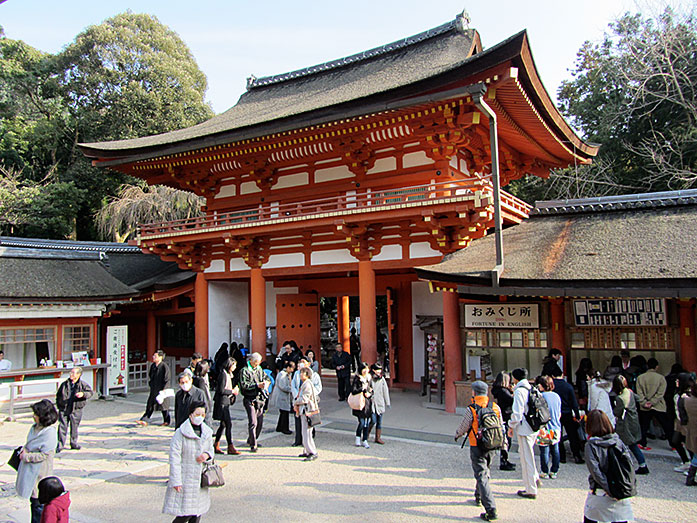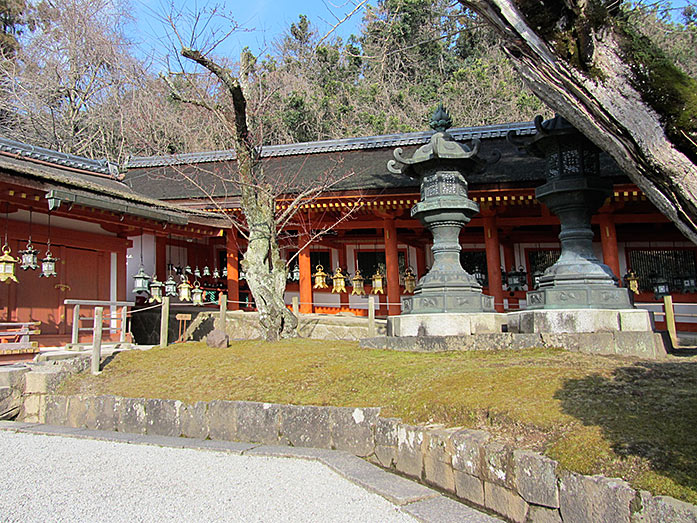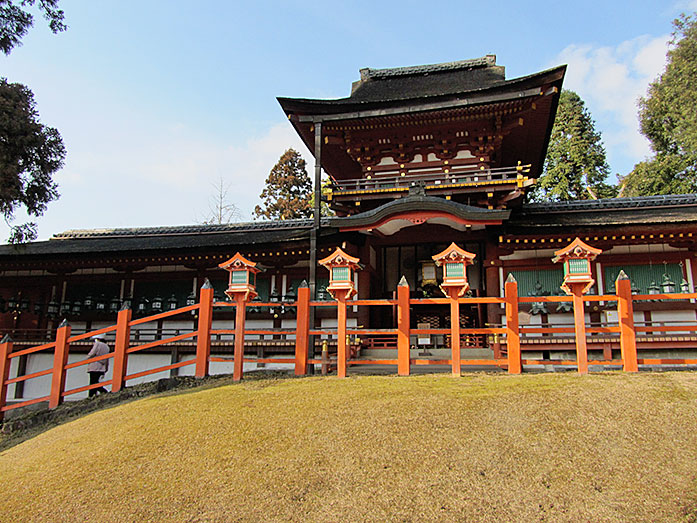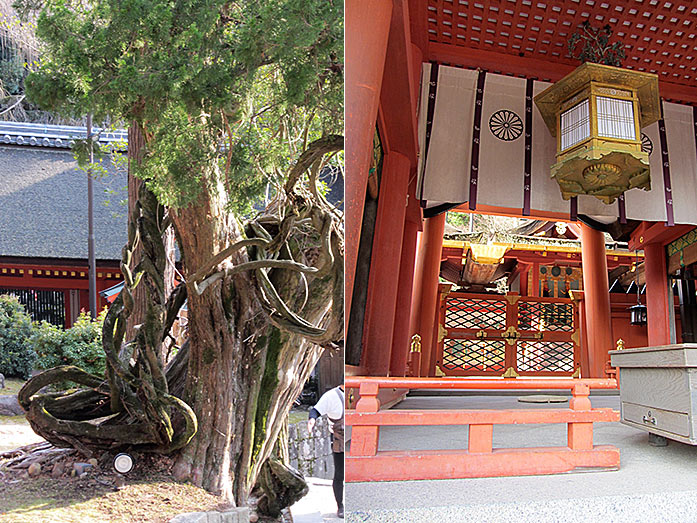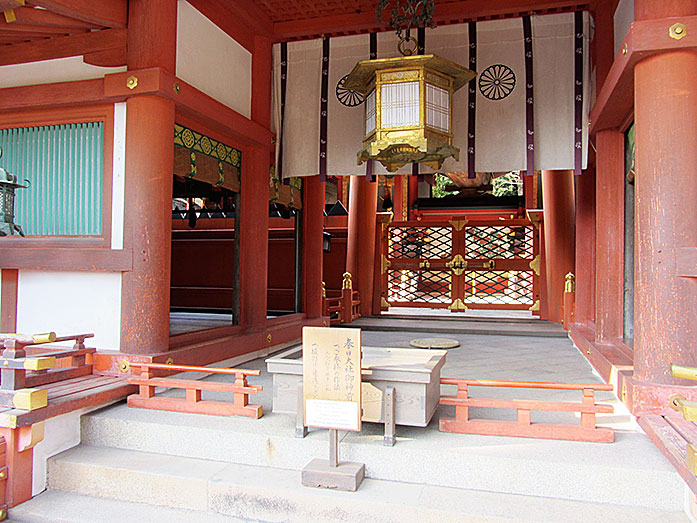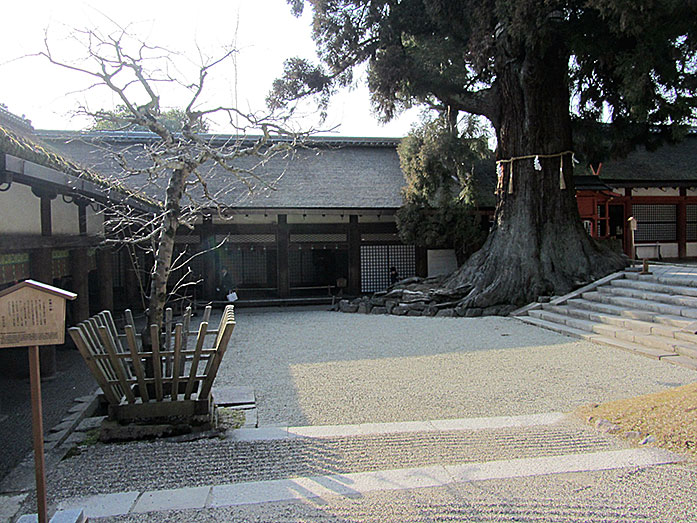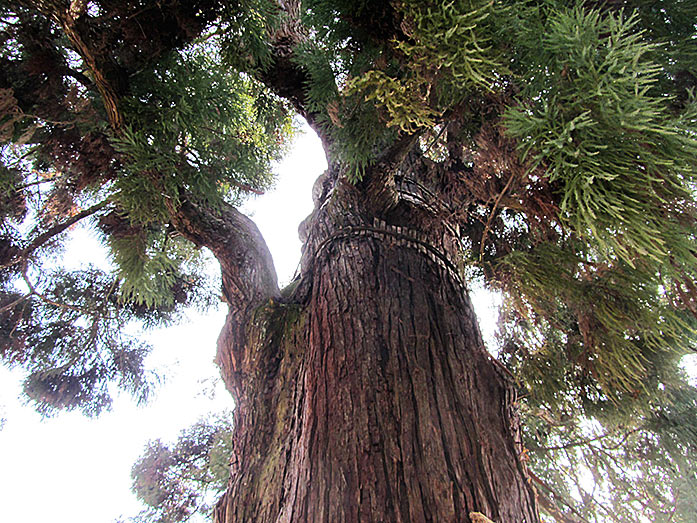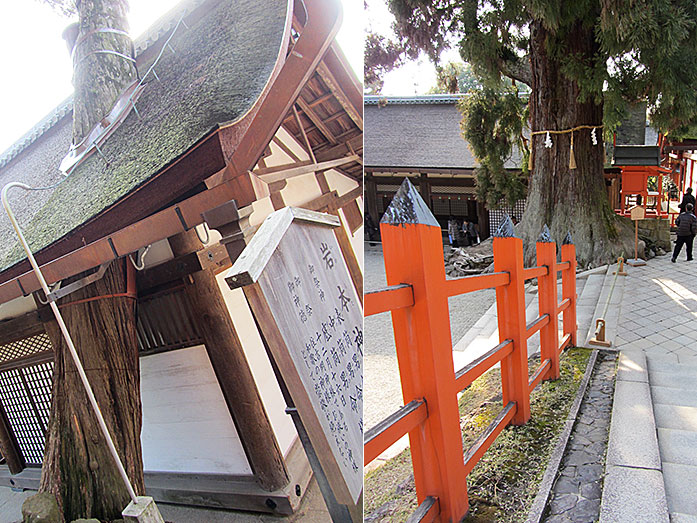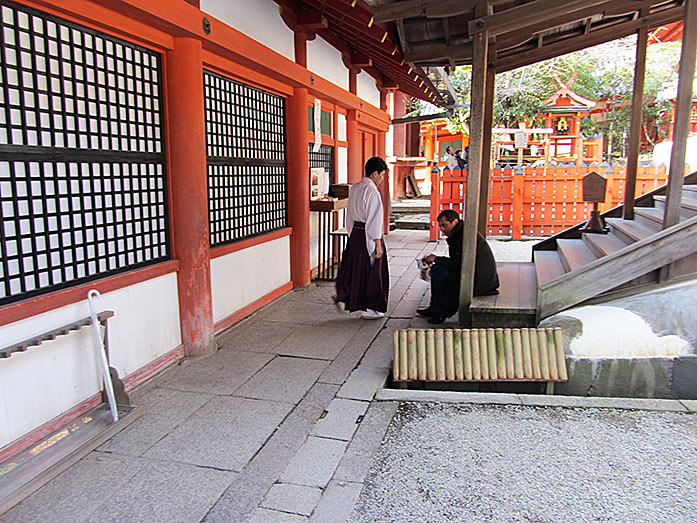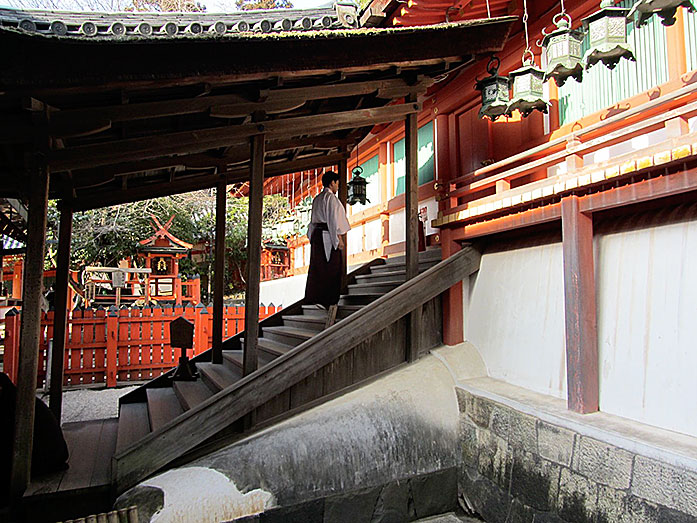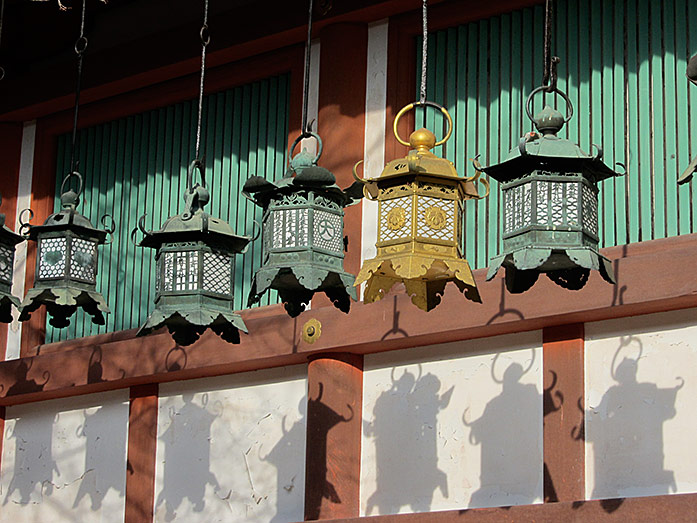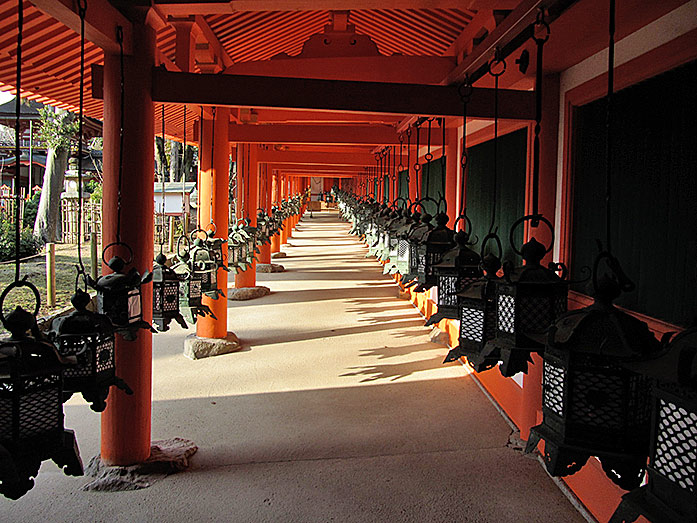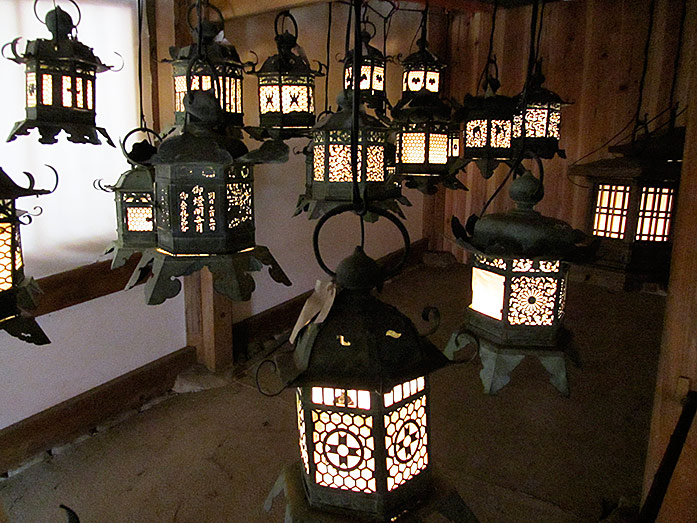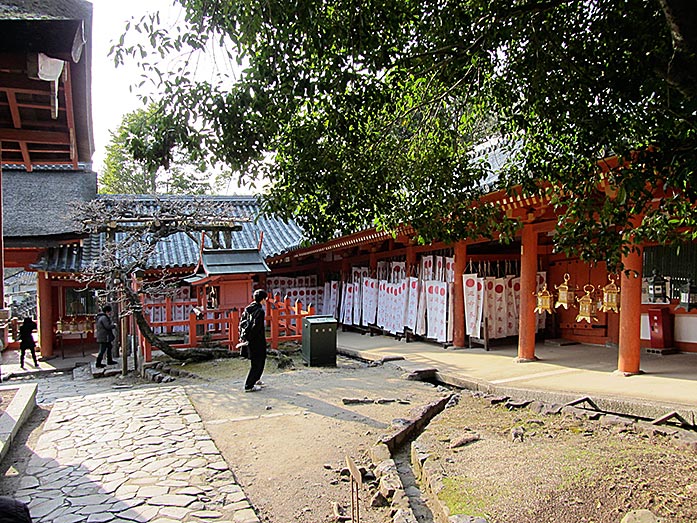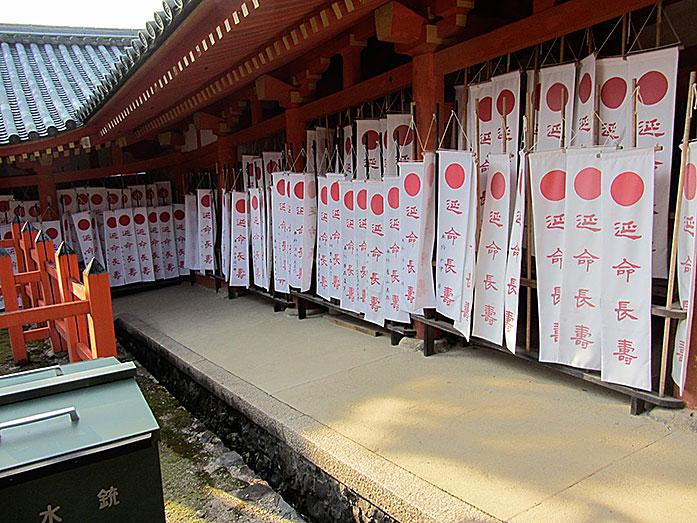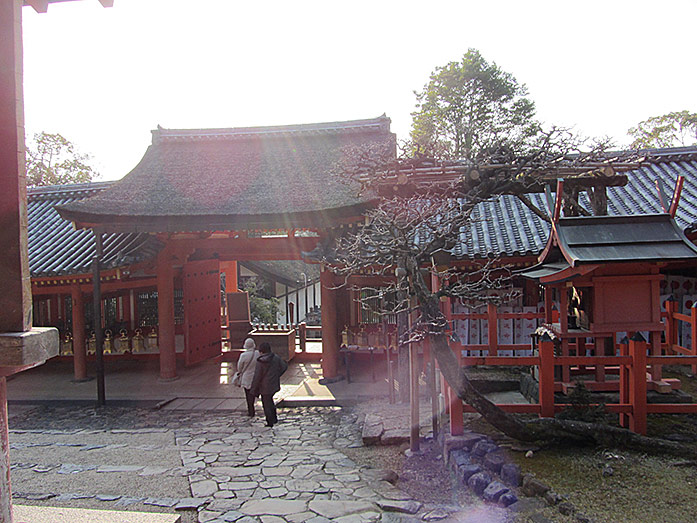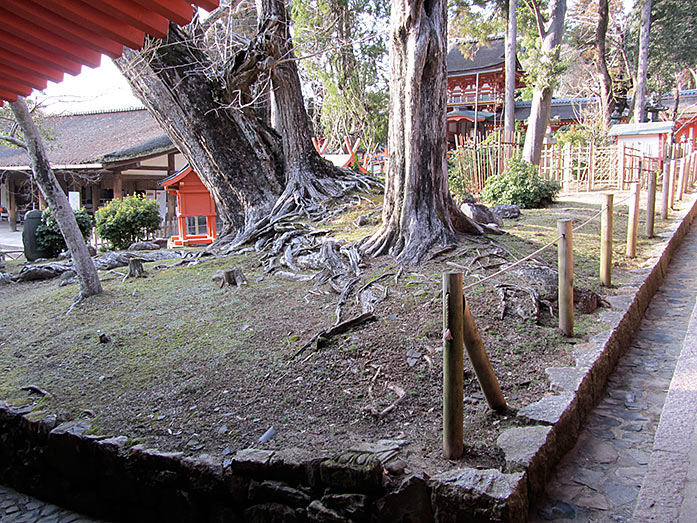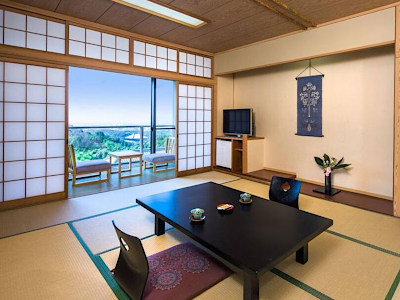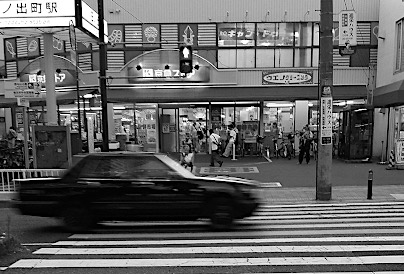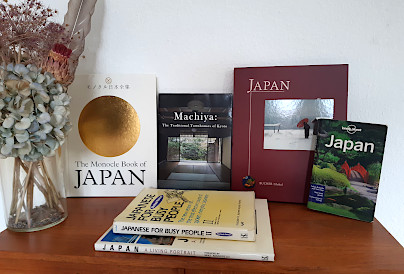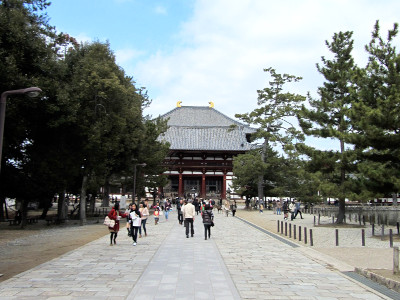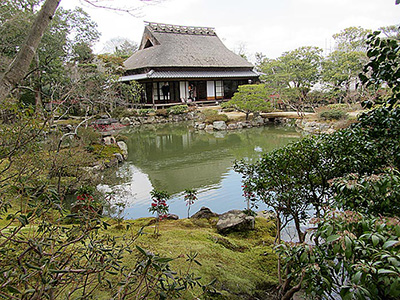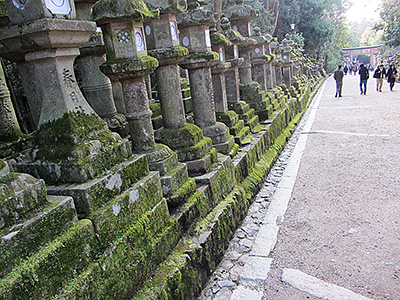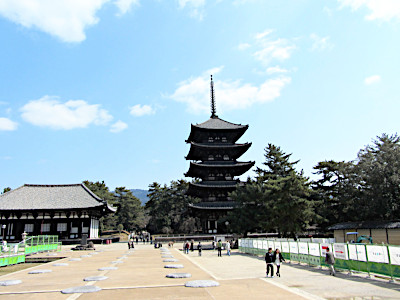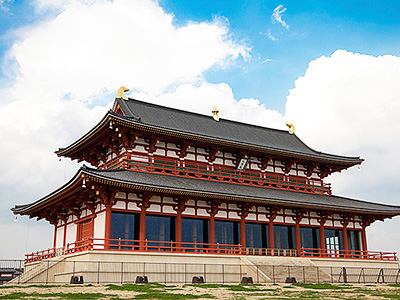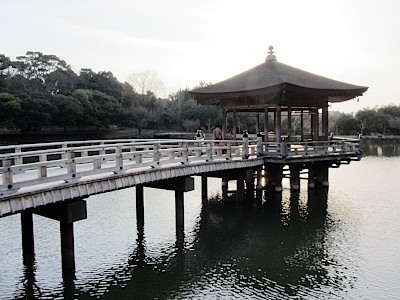Kasuga Taisha Shrine in Nara
This post can contain affiliate links, which means that we may receive a small commission if you make a purchase using these links.
Facts & Figures
Kasuga Taisha Shrine (Kasuga Grand Shrine) in Nara is a UNESCO World Heritage Site (since 1998), a designated National Treasure, and one of the most famous Shinto Shrines in Japan. It is also the head shrine for around 3000 Kasuga Shrines within Japan.
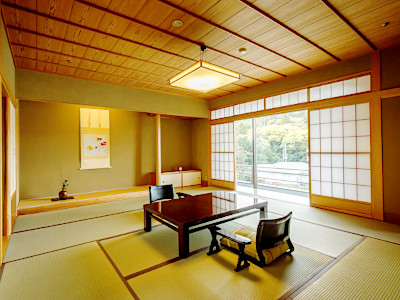 Explore Ryokans in Nara >
Explore Ryokans in Nara >
Ryokans are the perfect way to discover old Japanese culture and traditions.
One outstanding feature of the shrine is more than 1000 bronze lanterns known as Mantoro donated by worshippers. The style of the architecture is called Kasuga-zukuri. It is characterized by a sloping roof extending over the front of the building.
- Main shrine (Hon-den):
- Opening Hours - 6:00 am to 6:00 pm (April to September)
- Opening Hours - 6:30 am to 5:30 pm (rest of the year)
- Admission fee - 500 yen (inner grounds), free (outer grounds)
- Treasury Hall (Houmotsu-den):
- Opening Hours - 9:00 am to 4:30 pm (December to February)
- Opening Hours - 9:00 am to 5:00 pm (rest of the year)
- Closed - on Mondays from December to February
- Admission fee - 400 yen
- Manyo Botanical Garden (Shin-en):
- Opening Hours - 9:00 am to 4:30 pm (December to February)
- Opening Hours - 9:00 am to 5:00 pm (rest of the year)
- Closed - on Mondays from December to February
- Admission fee - 500 yen
My tips for local activities
How about exploring the highlights and hidden gems of the fascinating city Nara with a local guide. Check out this page > for more details.
History
The Fujiwara family, a powerful clan of regents during Nara (710 - 794) and Heian Periods (794 - 1185), established the shrine in 768. Four deities (gods) are enshrined at Kasuga Taisha. According to the Shinto concept of purity, the Kasuga Taisha Shrine was rebuilt every two decades, like the Grand Shrine of Ise. This tradition stopped in 1863 (end of the Edo Period). From 1871 to 1946 Kasuga Taisha had the 1st rank status of a government-supported shrine called Kanpei-taisha (Imperial shrine). In 1998 Kasuga Taisha received the status of a UNESCO World Heritage Site and is part of the Historic Monuments of Ancient Nara.
Location

Kasuga Taisha Shrine is located in the eastern part of the Nara Park near Todaiji Temple and Kofukuji.
Address: 160 Kasugano-cho, Nara-shi, Nara
How to get to Kasuga Taisha Shrine?
- 20min from Kintetsu Nara Station served by Nara and Kyoto Line
- 40min from JR Nara Station served by Yamatoji, Nara, Gakkentoshi, Sakurai Line
- 8min from Kintetsu Nara Station by bus to Kasuga Taisha Honden stop
Sightseeing spots at Kasuga Taisha Shrine complex
Top:
Honden (Main Hall) - The Honden is formed by 4 shrines standing in a row and has the status of a National Treasure. The 4 gods (Takamekazuchi-no-mikoto from Kashima of Ibaraki Prefecture, Futsunushi-no-mikoto from Katori of Chiba Prefecture, Amenokoyane-no-Mikoto and Himegami from Hiraoka of Osaka Prefecture) are enshrined here and protecting the Fujiwara family.
Treasure House (Kasuga Taisha Homotsukan) - It houses the different shrine's relics like ornate taiko drums or bronze mirrors. We are talking here about hundreds of national treasure items from the Heian period (794 - 1185).
Kasuga Primeval Forest - The forest is located behind the Kasuga Taisha Shrine and unfortunately, there is no access for the public.
Path to Kasuga Taisha Shrine - Appr. 2000 stone lanterns are located along the Kasuga Taisha path. The lanterns are only lit twice a year during the Mantoro Festivals (Setsubun and Obon) in February and August. You will see many deer motifs on the stone lanterns. Deer are in the Shinto religion viewed as messengers of the gods.
Auxiliary shrines - These small or miniature shrines, like Wakamiya Shrine or Meoto Daikokusha, are worth a visit. 12 shrines along the Kasuga Taisha path are dedicated to the "twelve lucky gods".
Shinen Manyo Botanical Garden - This beautiful place is also called Kasuga Taisha Garden. It was opened for the public in 1932 and covers an area of approx. 30000 square meters. The garden is split up into different sections like the Five Grains, Wisteria, Camellia, and Iris Garden. You can discover there over 300 plant species. Btw the wisteria flower is the symbol of the Fujiwara clan because the name means "field of wisteria”. Adults have to pay 500 yen and children 250 yen for the entrance ticket.
Minamimon (South Gate) - The two-story vermilion gate with a height of 12m is an Important Cultural Property and the main entrance to the inner shrine complex.
Chumon Gate - The present gate was built in 1613 and is an Important Cultural Property.
Honsha-Osugi - The huge cedar tree with a height of 20m and circumference of over 8m is more than 1000 years old.
Festival & Events (dates can change without notice)
February
Setsubun Mantoro (2nd - 4th)
This is one of the best times to visit Kasuga Taisha. All of the 3000 shrine's lanterns are lit at once on the 3rd of February between 6:30 pm and 9:00 pm. This event has a history of more than 800 years.
March
Kasuga Matsuri (Monkey Festival) (13th)
This festival features gagaku ("elegant dance", performed for centuries at the Imperial court) and bugaku (classical Japanese dance of Chinese origin) dance performances.
August
Obon Mantoro (14th - 15th)
Similar to the Setsubun Mantoro in February all of the 3000 shrine's lanterns are lit at once between 6:30 pm and 9:00 pm.
Where to stay in Nara?
Day trips from Nara:
My 100 Best Moments in Japan
I have visited Japan nearly every year since 2004. This is my collection of the 100 best moments in my favorite country. Enjoy the pictures and I hope you will start your own journey soon.
Find out more >
Books about Japan
Reading books is a great source of inspiration for me. Check out my recommended list of books about the fascinating country Japan.
My Book recommendations >

